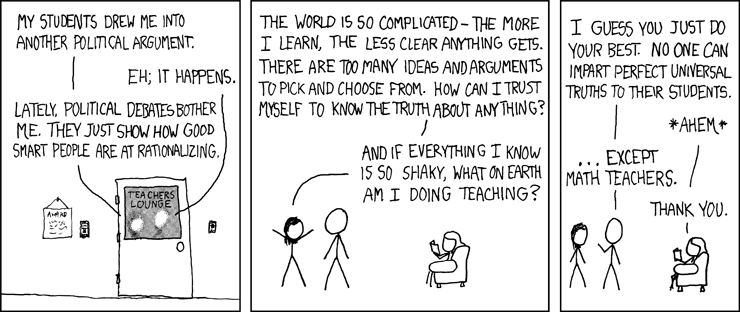I’ve recently taken an opportunity to teach my area of expertise at The George Washington University, in Washington, DC as an adjunct professor. In this article, I’ll tell you about my experience and explain how to become an adjunct professor.
I was fortunate enough to be invited to instruct a skills-focused, graduate-level course for GWU’s School of Media & Public Affairs (SMPA).
Let me tell you a little about the part-time experience, what I learned, and why you might consider pursuing something similar.
What is an Adjunct Professor?
An adjunct professor is typically a part-time employee of a university or college with a history or background in industry as opposed to academia.
An adjunct professor is defined as someone hired by the institution to teach but isn’t a full member of the faculty.
Adjunct Professor Requirements
Becoming an adjunct professor does not require any particular legal credential or certification. The institution looks to an adjunct professor for their expertise in fields outside of academia with a proven record of performance within an industry.
This functional expertise is what the institution seeks to be taught to their students.
An adjunct professor’s job description will look much like any other teaching position.
An adjunct professor will need to create or utilize learning criteria, a set of goals likely laid out by the department head. They’ll need to create lesson plans, grade tests, and projects, and spend time in a classroom setting teaching.
How to Become an Adjunct Professor
How did I find out about the opportunity to become an adjunct professor? An existing client had offered my name up when they were made aware that the school was looking to fill a spot for an often-requested course dealing with web skills.
I’ve had experience teaching: training in a variety of web technologies is a service offered by Daymuse.
My primary purpose in the Peace Corps was Small Business Development.
I’ve mentored and taught other developers & programmers.
However, teaching as an adjunct professor at a major university was a new pursuit for me.
The nitty-gritty of how to become an adjunct professor is much like any other job application: find the right fit, interview, negotiate, and get started.
What I Thought about Education
Prior to the invitation, I’d thought about getting more directly involved in education, perhaps as an adjunct professor.
A good chunk of my day-to-day work was tangentially involved (web development projects in higher education), and I’d been thinking about fulfillment, meaning, and purpose in life more and more.
The big Thirtieth Birthday was around the corner.
I set myself on a course for “Early Retirement” years ago which meant my work time was being replaced with free time steadily.
That free time could be used constructively to make some good in the world, perhaps as an adjunct professor, I’d thought.
Teaching Web Essentials in Washington, DC and Online at SMPA

I was told the course could be taught virtually (a big plus as I’m not a fan of commuting and DC is over 200 miles away, roundtrip), and that it would run only a part of the semester.
I was told students had been requesting a course that would provide them with essential web skills they could use in their career pursuits, as, these days, just about everything is somehow connected with web-oriented work.
I took it as the perfect chance to get my feet wet and accepted on the spot as an adjunct professor.
I hadn’t even thought about compensation, which I’d later learn is a big sticking point in today’s field of higher education.
Surprisingly, there wasn’t too much more to getting started than that.
I filled out several forms (official forms any part-time worker would be familiar with). I had an adjunct professor faculty handbook to review, a syllabus guide, and access to a course on teaching virtually via Blackboard.
It was just enough of a foundation, along with support offered by the administration, to build a curriculum without a thick layer of bureaucracy (a fear in this endeavor).
After the requisite forms, I needed to put together a class description and mini-bio, which would be made available to the students in the official semester courses outline:
Web Essentials: How do you leverage the web from the perspective of business strategy to create value? What do you need to understand within the sphere of web technologies to apply what the modern web has to offer? We’ll learn the practical basics to the many effective uses of the web in today’s business landscape.
Cooper, a founder of multiple web dependent businesses, has a wide variety of experience in web application development and user experience design. His educational background in Communication and Engineering often allows him to serve as a bridge between business strategy and information technology. After departing GW’s External Relations, Mr. Cooper’s latest venture partners with government, enterprise, non-profit, and healthcare-related business to leverage the web to serve organizational missions.
Those couple of paragraphs weren’t as easy to write as I thought they’d be.
I needed to first come up with an outline of the curriculum so I could break that down, even further, to just a couple of sentences.
I also had to write a bit of background about myself, which felt slightly narcissistic for someone who tends to be introverted (this blog itself is an attempt to stretch that comfort zone).
It was hard.
I rewrote that little section on the course and myself several times, never quite satisfied.
At that moment, I began to think about how the whole course would be of students analyzing my instruction, my words, my teaching.
It made me anxious.
It’s funny: in my day-to-day, I write plenty of “words” which are “read” by many thousands of people, every day. Those words are code, though, and they’re interpreted by a web browser, a server, or another application.
Here I was, stuck thinking about how just a handful of students would interpret my simple English.
I made it through those few paragraphs and the submission found its way to publishing. I wrote many more paragraphs for the curriculum: a course outline, a syllabus, a structure for the assignments.
I talked with my previous professors and adjuncts, seeking advice and direction. Soon enough, course sign-ups were closed for the semester and I had my roster of seven students.
I decided to reach out to them directly, asking what they expected to learn and what they were interested in:
- Are you more interested in the business/communication/strategy side of the web or the technical side?
- The web can be leveraged to great effect whether you’re in enterprise, non-profit, government, or even starting your own business. If you had to guess (or if you’ve already done so), how would you envision beginning your career path in the workforce? This will help us create realistic scenarios to study for class.
- What single topic are you most interested in that is web-related? Perhaps this was the impetus to your interest in the course. This can be a personal interest or something fun, it doesn’t have to be career-related.
As you might imagine, the responses were varied. Some were more interested in non-technical aspects, while others were interested in the technology itself. Students were aiming in different directions with their careers.
Everyone was interested in different things. This was all expected.
However, the goal was to start the students talking and thinking about why they were taking the course and to give me a direction that would allow us to overlap what I could offer and what they wanted.
It worked!
The conversation about creating value through their education continued throughout the course.
We could always step back from a topic at hand, and think from the student’s perspective: “How is this valuable to me?”
I ended up centering the course around developing different web-oriented knowledge, skills, and abilities:
- Creating a Foundational Web Presence
- Defining Success: Incorporating Metrics
- Delivering Information through Newsletters, Social Media, and Active Communication
- Gathering Feedback with Surveys, Polls, and Forms
Each of these topics was formed around a scenario. We discussed the specifics, each week, developing the details of the scenario requirements in class together.
This way we could cater to specific learning desires while I offered overall direction. We also brought in an “industry expert” each week, that was experienced with the scenario’s topic and could serve as a potential future boss, peer, or colleague; offering a real-world perspective.
These folks really brought the curriculum together, offering insight I otherwise could not.
Thank you:
- Tracy Helbert, Web Consultant (Creating a Foundational Web Presence)
- Max Entman, PCI Communications (Defining Success: Incorporating Metrics)
- Tom Cosgrove, The Virginia Senate Republican Caucus (Delivering Information through Newsletters, Social Media, and Active Communication)
- Anthony Nelson, The Advisory Board Company (Gathering Feedback with Surveys, Polls, and Forms)
Throughout the course’s five weeks of learning, the class used all sorts of free or open-source tools.
The tools were used to produce functional web presences:
- WordPress
- Weebly
- MailChimp
- SurveyMonkey
- Google Analytics
- Jetpack
- GIMP
- Prezi
- WuFoo Forms
- And a variety of social networks
We divided the class into teams, each utilizing a different set of tools to create their web presence.
As of this writing, they’re still available:
- The Financial Aid is Too Darn Late!
- The Jeffersonians
- District Floral
The students imagined their own ideas of what they could build a web presence around, giving them some freedom and a creative outlet. The less structured nature proved to be one of the harder parts of the curriculum to overcome.
As there was not a predefined script that applied to all the student groups; questions, and their answers, were unique to each group.
The advantage was that each group had different methods to solve problems which exposed the class to more solutions. This created a multiplier for experience earned from the class.
After each scenario, I asked the students to answer to questions as it related to what they learned that week:
- Did you find this scenario to be applicable to the goals and premise of the course, why or why not?
- Did you derive value from completing the scenario; learning about web-related topics, tools, and skills, why or why not?
This feedback proved invaluable, and the critical feedback (though hard to take sometimes), helped immensely in creating more value for the students and lessons for me as an adjunct professor.
I have a few key takeaways.
Teaching is Hard
Be ready for crickets when you ask questions, no matter how engaged you think students are. Everyone has a lot going on in their head, you’re probably not the top priority.
Students will stump you, teaching is an opportunity for everyone to learn.
Lean on Others
More than likely, someone else can explain any specific topic better than you can. Better yet, they’ve probably done it before and it’s probably available on the internet or you can reach out directly.
Use your network to gather advice, expertise, and direction to amplify what you can offer students. Stand on the shoulders of giants.
I’ve been making use of an online community for educators, LINCS, which acts as a forum to ask questions. I’ve found some very helpful folks and great advice.
What Does an Adjunct Professor Make?
It’s a Passion Project.
I alluded earlier that direct financial compensation wasn’t a top priority for this endeavor.
I don’t think it should be a top priority, but there’s the issue of a reasonable wage which is a very controversial topic as it applies to an adjunct professor.
Fortunately, I wasn’t doing this to make ends meet.
However, I also did the math and even figuring in a roughly 4:1 ratio of external hours to class hours, and the hourly wage came out to a reasonably middle-class income if one had a full-time schedule.
It seems GWU and SMPA likely pay a wage at the higher end of the spectrum as it’s an expensive school.
This ignores the lack of benefits, stability, or security – prominent conversation topics in higher education right now – though expected for someone who normally works on a contract-basis anyway.
My Experience as an Adjunct Professor
I remember, as a student, typically looking up to my professors as role models. Externally they were: focussed, deliberate, effective, and giving. I wasn’t sure how to become an adjunct professor with qualities like that.
Those are big shoes to fill.
It’s hard to see how I could have expressed those qualities, especially as I internally felt like I was bumbling through.
It’s important to remember not to compare your internal to someone else’s external.
Every now and then a student would tell me they learned something new.
They’d smile as the light bulb clicked on.
They’d show their new knowledge by baking together different concepts to create something novel, teaching me in the process.


One reply on “How to Become an Adjunct Professor (and What It’s Like)”
Hi! I’m writing a story about adjunct professors for my journalism class (at GW) and I came across your blog. I was hoping I could interview you for the story. Let me know!